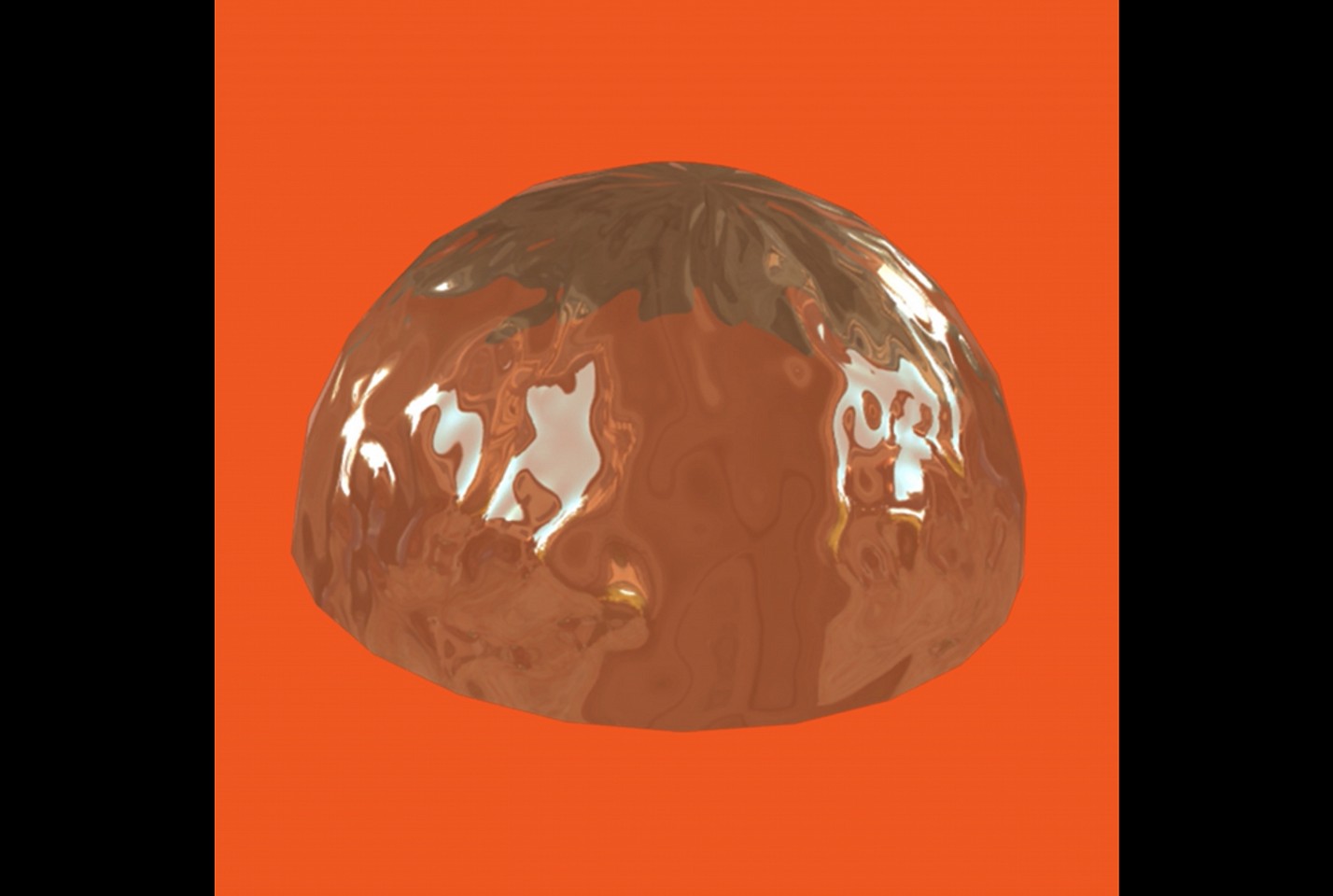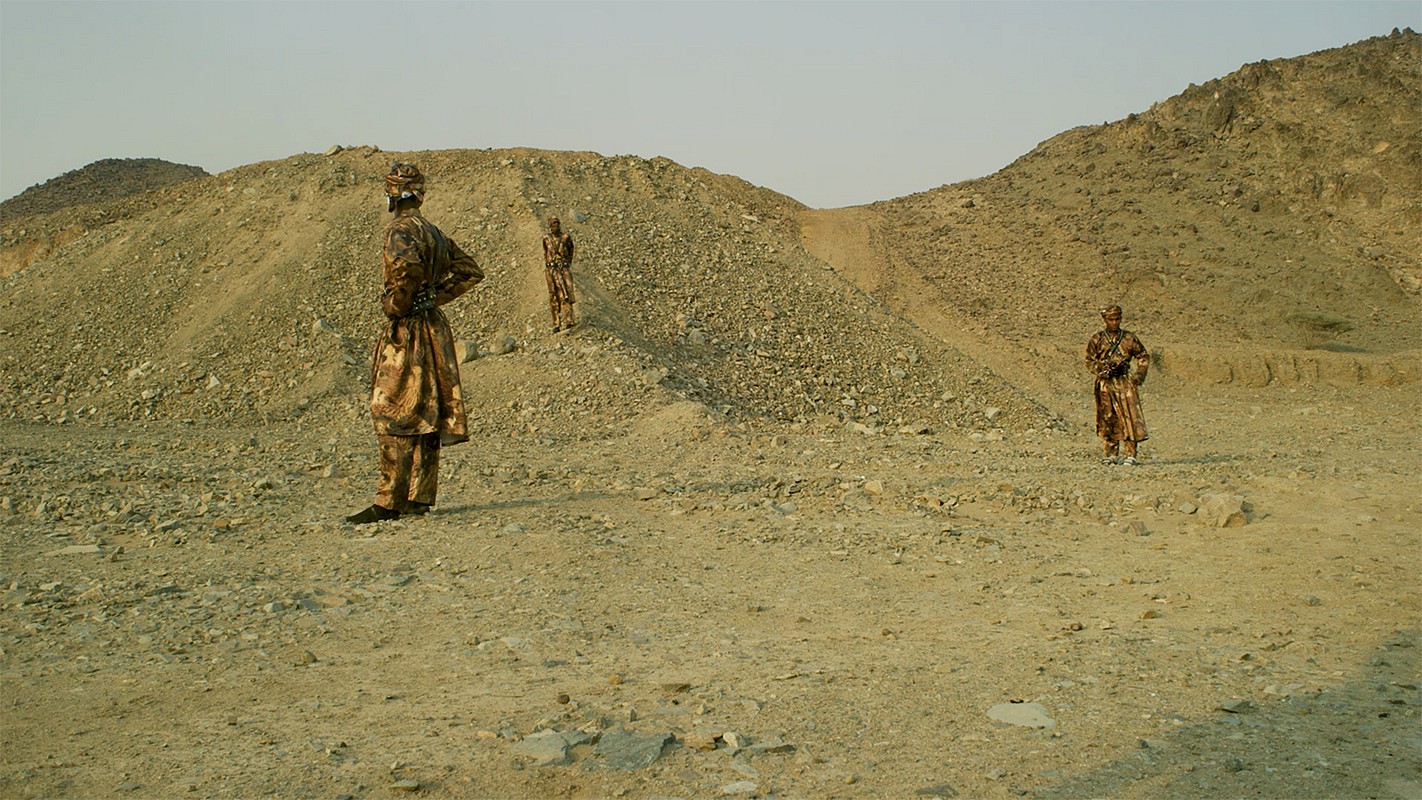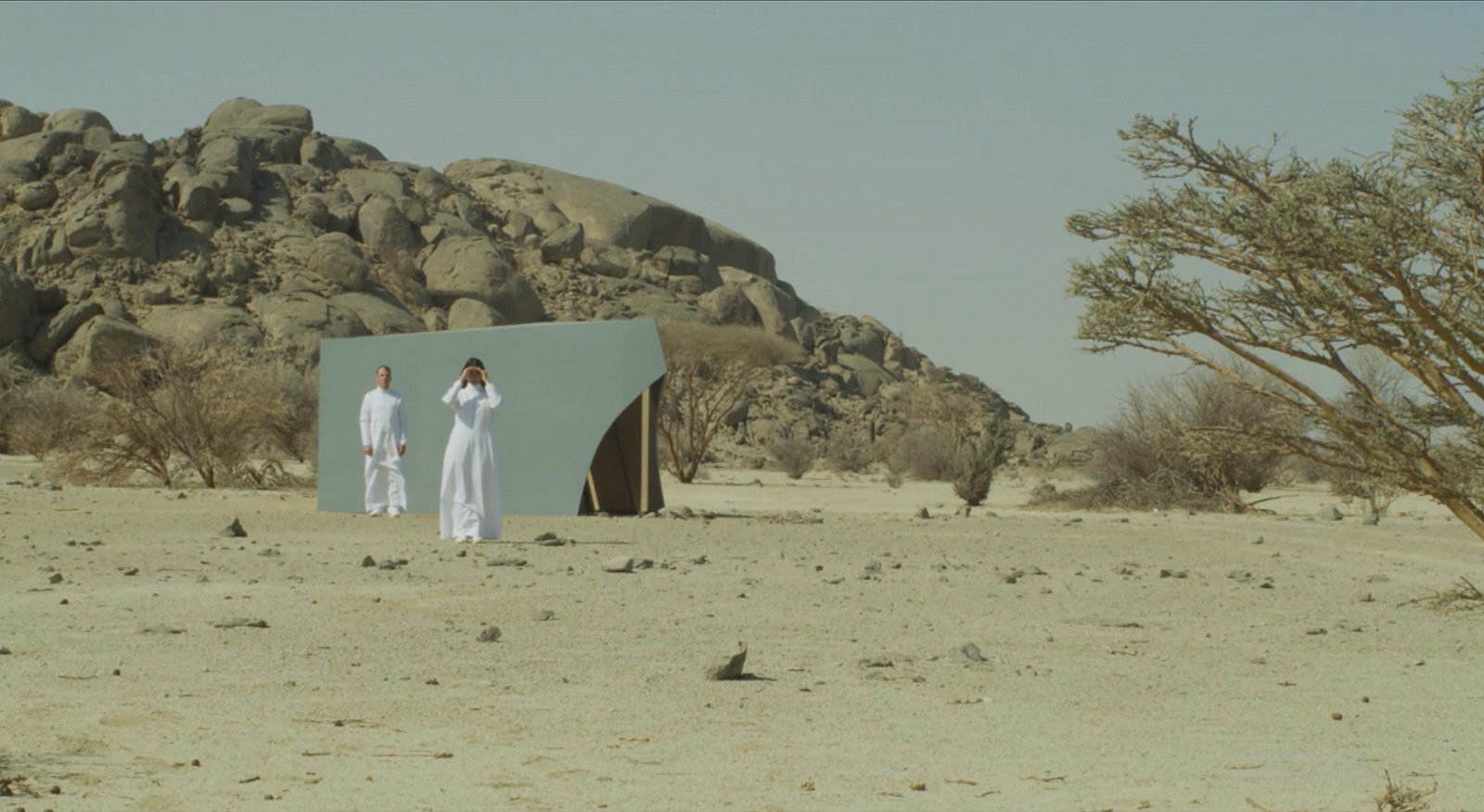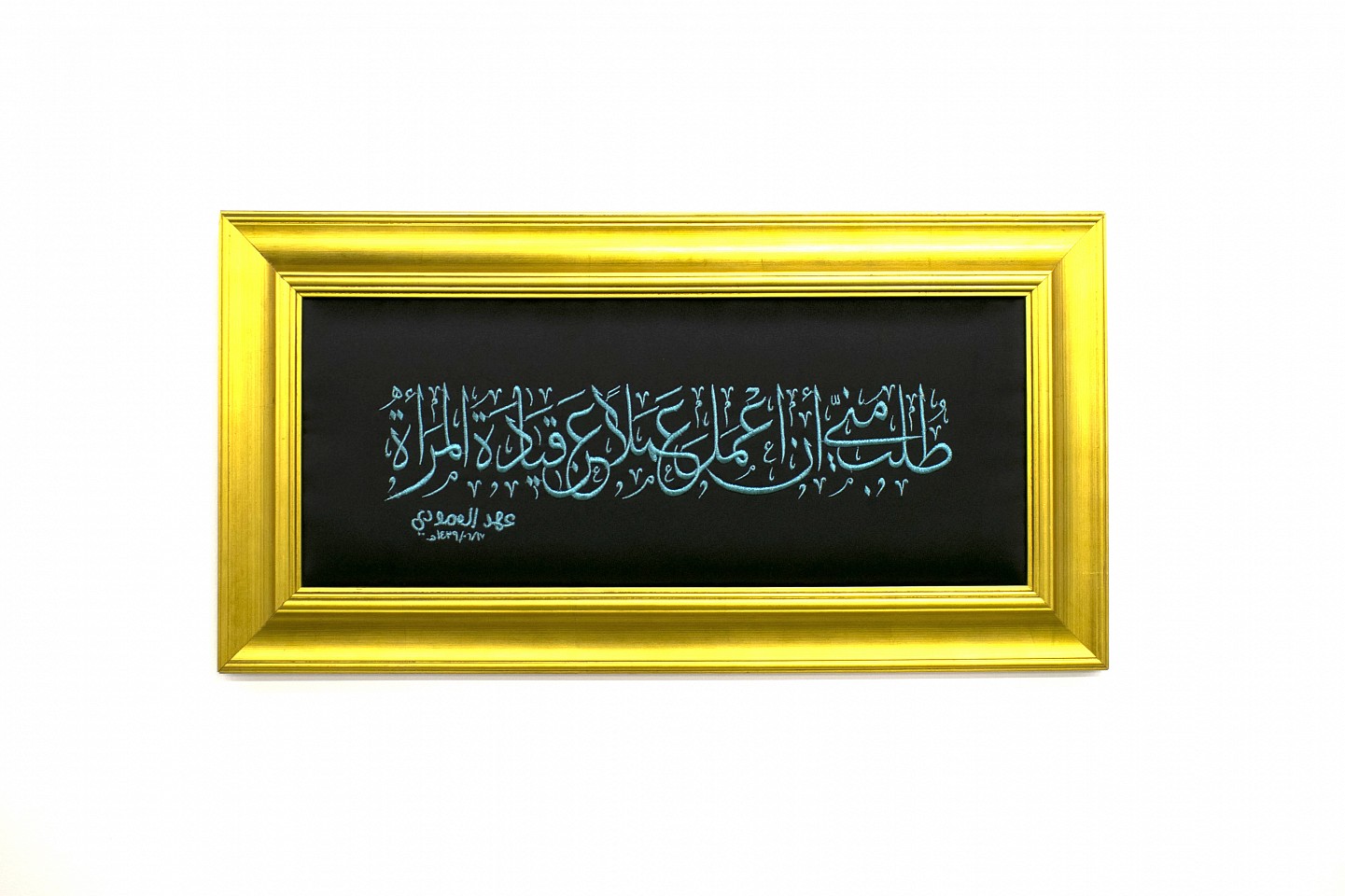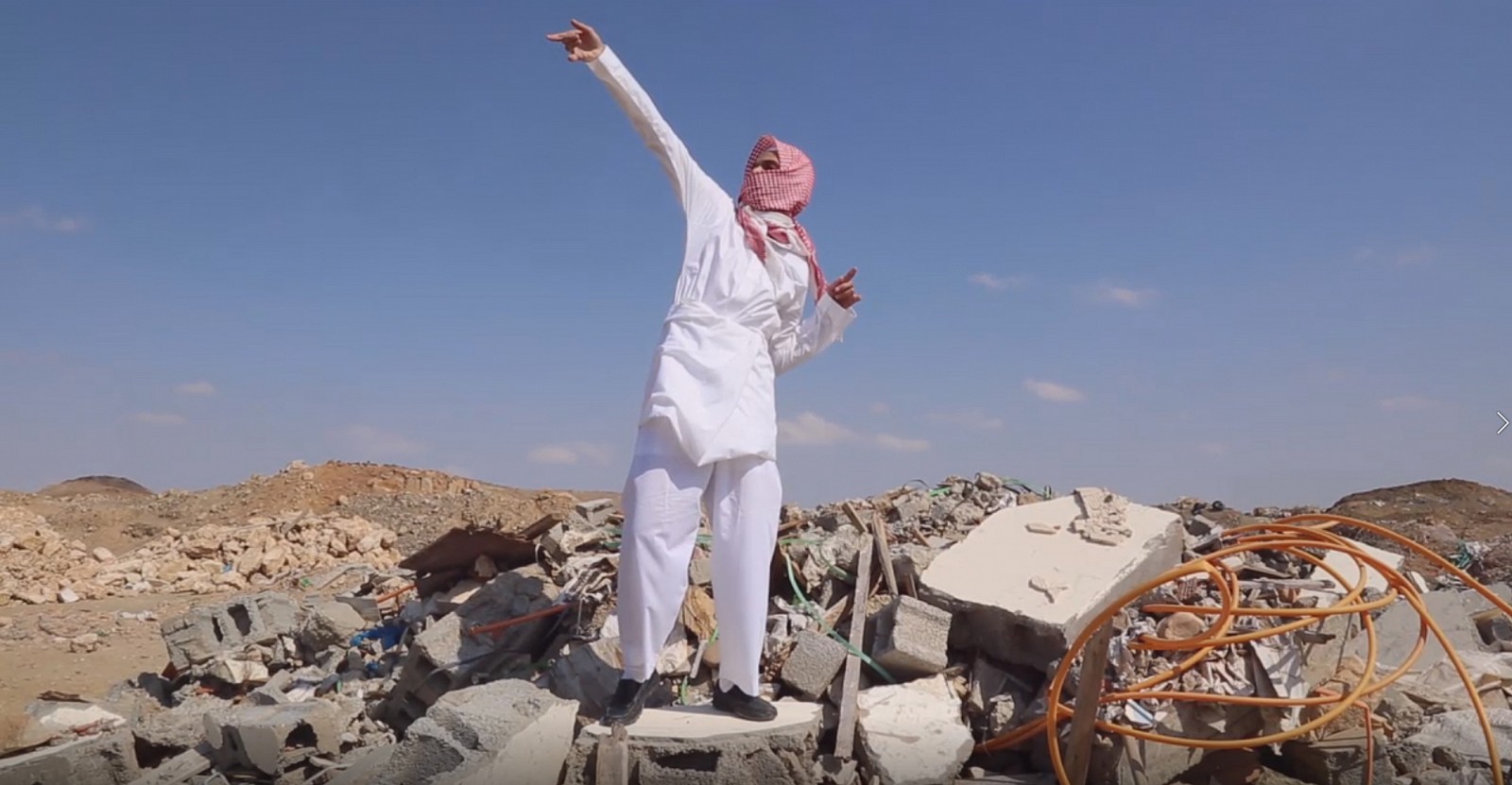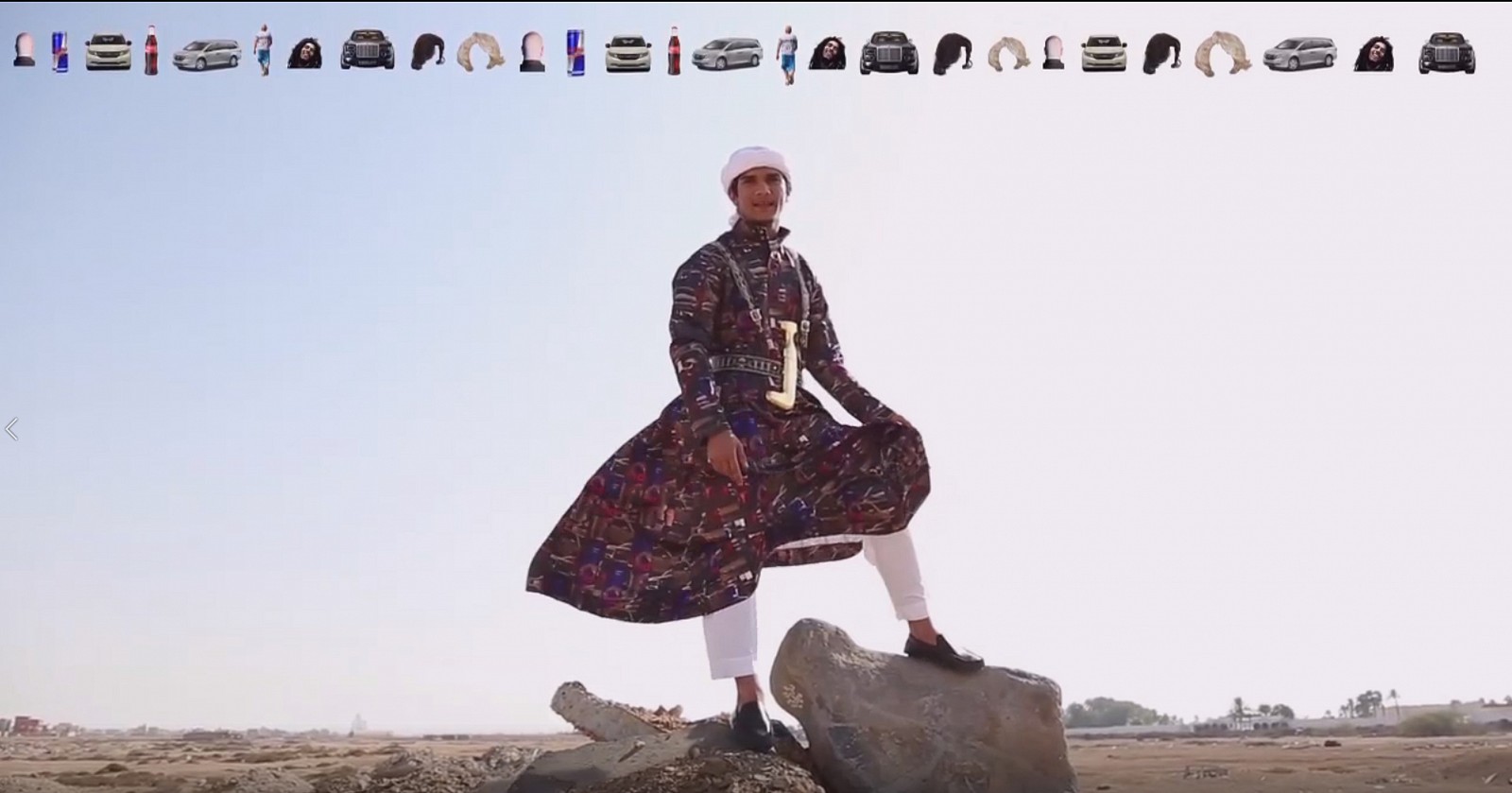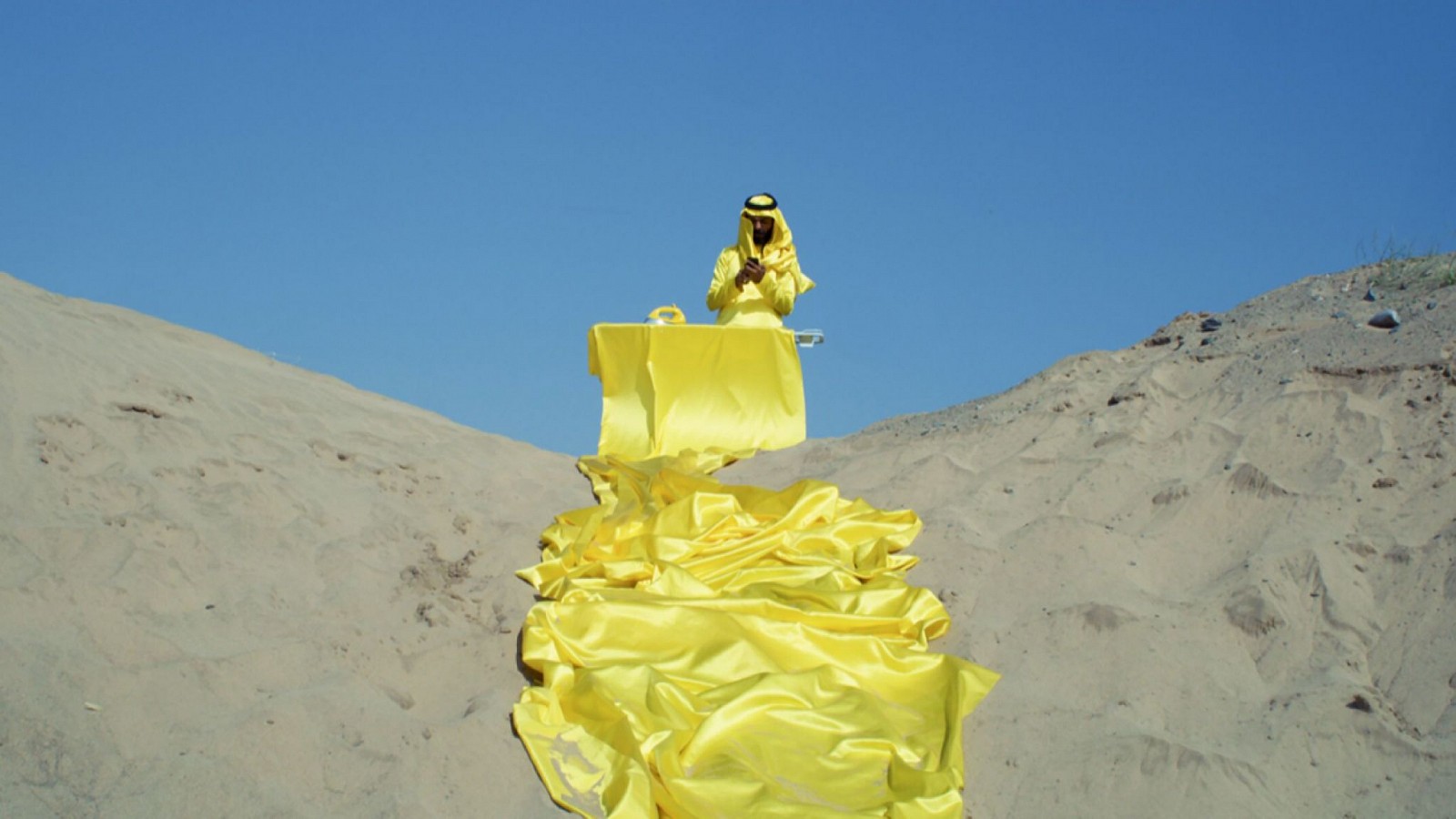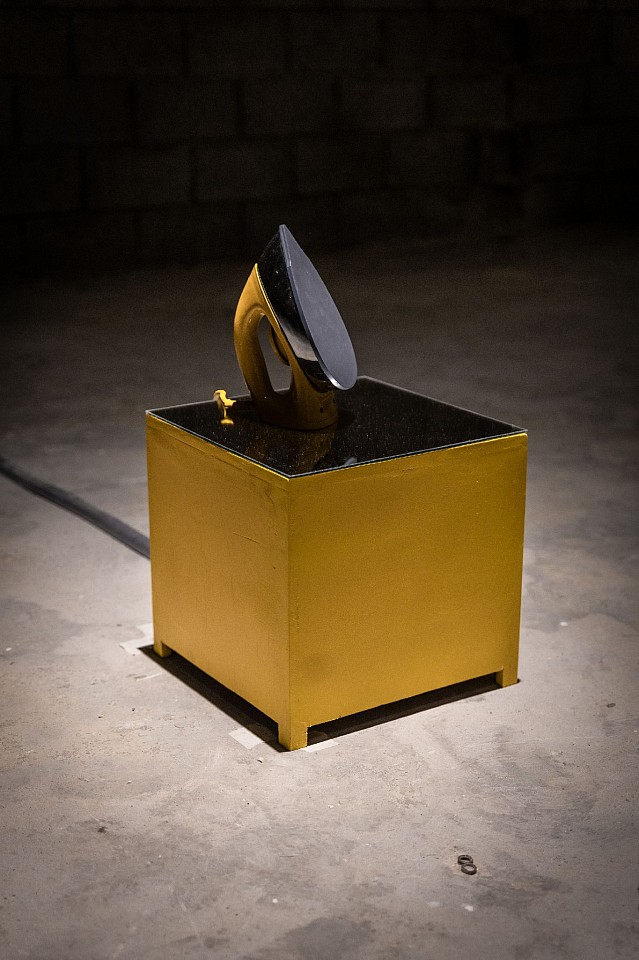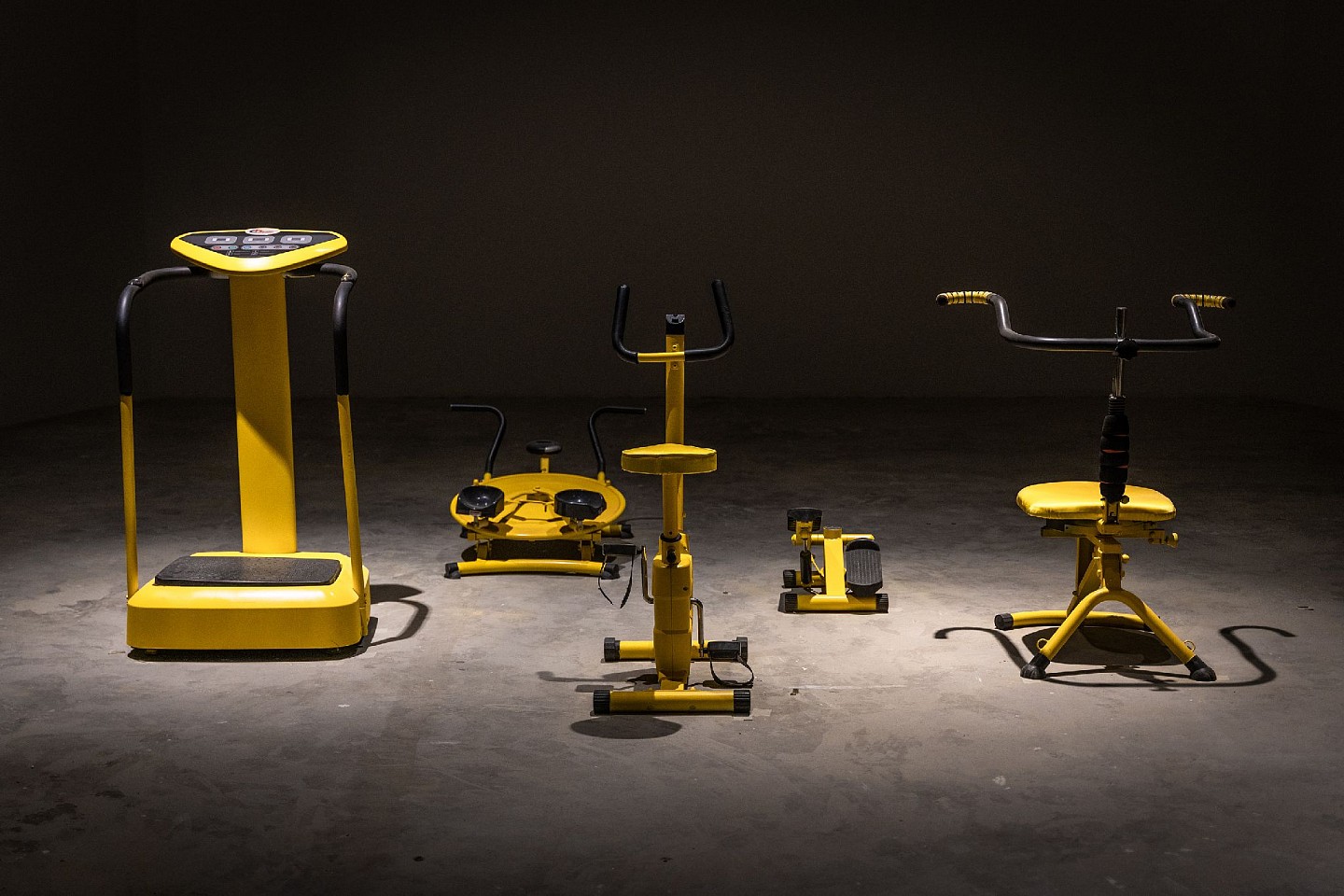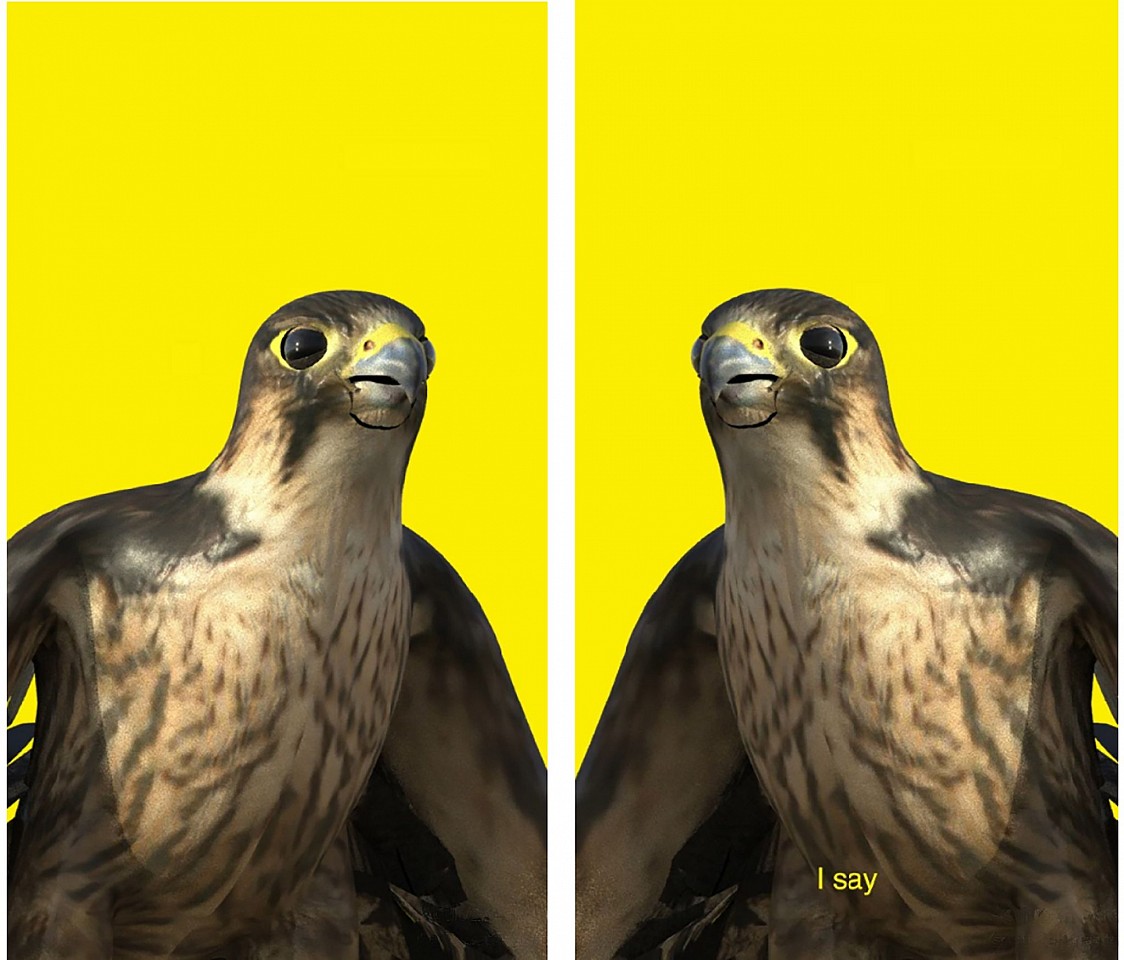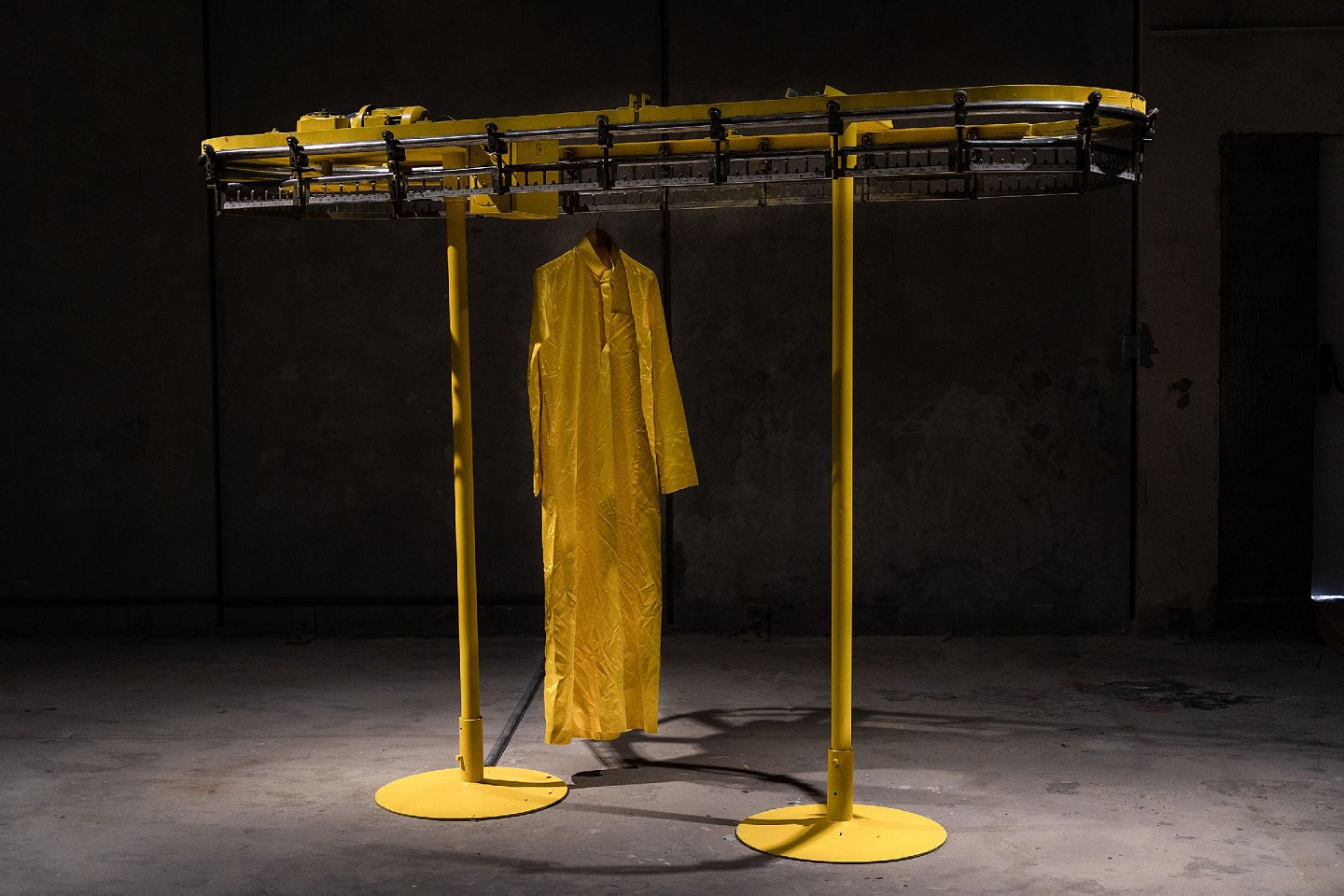Ahaad Al Amoudi
Ahaad Al Amoudi
Bahara (Men of the sea), 2019
Single-channel video, color, sound
Ahaad Al Amoudi
Those who don't know falcons grill them, 2018
Single-channel video, color, sound
Ahaad Al Amoudi
Niun, 2018
Single-channel video, color, sound
Ahaad Al Amoudi
When I was asked, 2018
Embroidered Fabric
Variation of 12
AAA0001
Ahaad Al Amoudi
Michael Jackson: v=X7czOWj2Bf4, 2017
Video
AAA0007
Ahaad Al Amoudi
v=YGvLDDWwLEk, 2016
Video
Edition of 5
AAA0008
Ahaad Al Amoudi
Iron Man, 2020
Video
AAA0027
Ahaad Al Amoudi
The Iron, 2020
Interactive iron sculpture with audio
AAA0039
Ahaad Al Amoudi
The Outdoor Health Club, 2020
Metal Sculpture
AAA0038
Ahaad Al Amoudi
What Is This, 2020
Video
AAA0033
Ahaad Al Amoudi
With The People, You Blondie, 2020
laundry rack and thobe
AAA0040











For Bahara (Men of the sea) (2019), Alamoudi stages a soundscape in which the reverberations of the sea are merged with a modernized version of the song of “El Yamal,” a folkloric anthem sung by Saudi pearl divers and sailors, known in Arabic as Bahara , to give them strength in their seafaring endeavors. A slideshow of static imagery — fragmented body parts in the desert, an orange backdrop, and a digitally-rendered silicone vessel — provide the mise-en-scène for this video, creating an atmosphere of relative calm in stark contrast with the arduous task of fishing and pearl diving . For the artist, this work honors the traditions of these seamen, especially the pearl divers, whose now defunct trade was in its heyday a crucial part of the economy of the eastern coast of the Arabian Peninsula.
In Those who don’t know falcons grill them (2018), a cohort of young male dancers perform the Khabayti, a hybrid style influenced by both Hejazi and Sufi dance. The choreographed pageantry of swirling, sword-wielding men and boys was once used in preparation for war, and is now typically performed at social gatherings by male dancers, with the exception of segregated events, at which only female dancers are allowed to perform. In the video, the troupe is seemingly propelled by the hypnotically mastered sounds of the mizmar, a wind instrument common in traditional Arabic music. Drawing on her background in print making, Alamoudi outfits her dancers in custom-made garments patterned with falcons, the national bird of Saudi Arabia, which represents an emblem of courage, power, and national identity. Alamoudi appropriates the format of a music video, remixing references to traditional Arab culture and, as a woman director, subverting the male gaze typical of the genre by using only male performers.
Made in collaboration with American artist Michael Mogensen, Alamoudi’s video NIUN (2018) is inspired by thirteenth-century Persian physician, geographer, and writer Zakariya al-Qazwini’s story, Awaj bin Anfaq, which considered one of the first works of science fiction, about an alien who visits Earth to study the oddities of human behavior. Alamoudi’s video follows two extra-terrestrial protagonists (NIUN 1 and NIUN 2) who claim the desert as their own and begin to lay down the foundation for a new civilization. Together, the pair devise seven essential components that will fortify a prosperous future: energy, water, mobility, biotechnology, entertainment, technology, and manufacturing. Together and in sync, the outlanders chant mantras—ardi (“my land”), noor (“light”), hajira (“traveller”), and hajirati (“my rock”)—that, in the artist’s view, reinforce the importance of language and open communication in cultivating the future.
Tini Warwar, is an underground song that has found its way into the mainstream, and took over the music scene in Saudi Arabia in 2013. Different musicians and singers started making their own rendition of the song, and it is still considered a favorite among Saudi wedding singers.
This socio-cultural product is a reflection of the effects of globalization and the struggle of hegemony that is occurring in the Kingdom of Saudi Arabia. The song is a hybrid being that is a reflection of western influences, combined with Saudi traditional beats and a countdown from 10 to 1. The lyrics throughout the song are a comparison between the past and the present. It showcases current views of Saudis, and what they perceive to be more superior or powerful. It is an example of the economical social hierarchy within the society.
The dance preformed in the video is a traditional Arabian dance called “AlKhibayti”. In the past this dance was usually danced in preparation for war and has different influences including Sufi and Hejazi. Today this dance is usually danced as a cultural performance in weddings and social events

